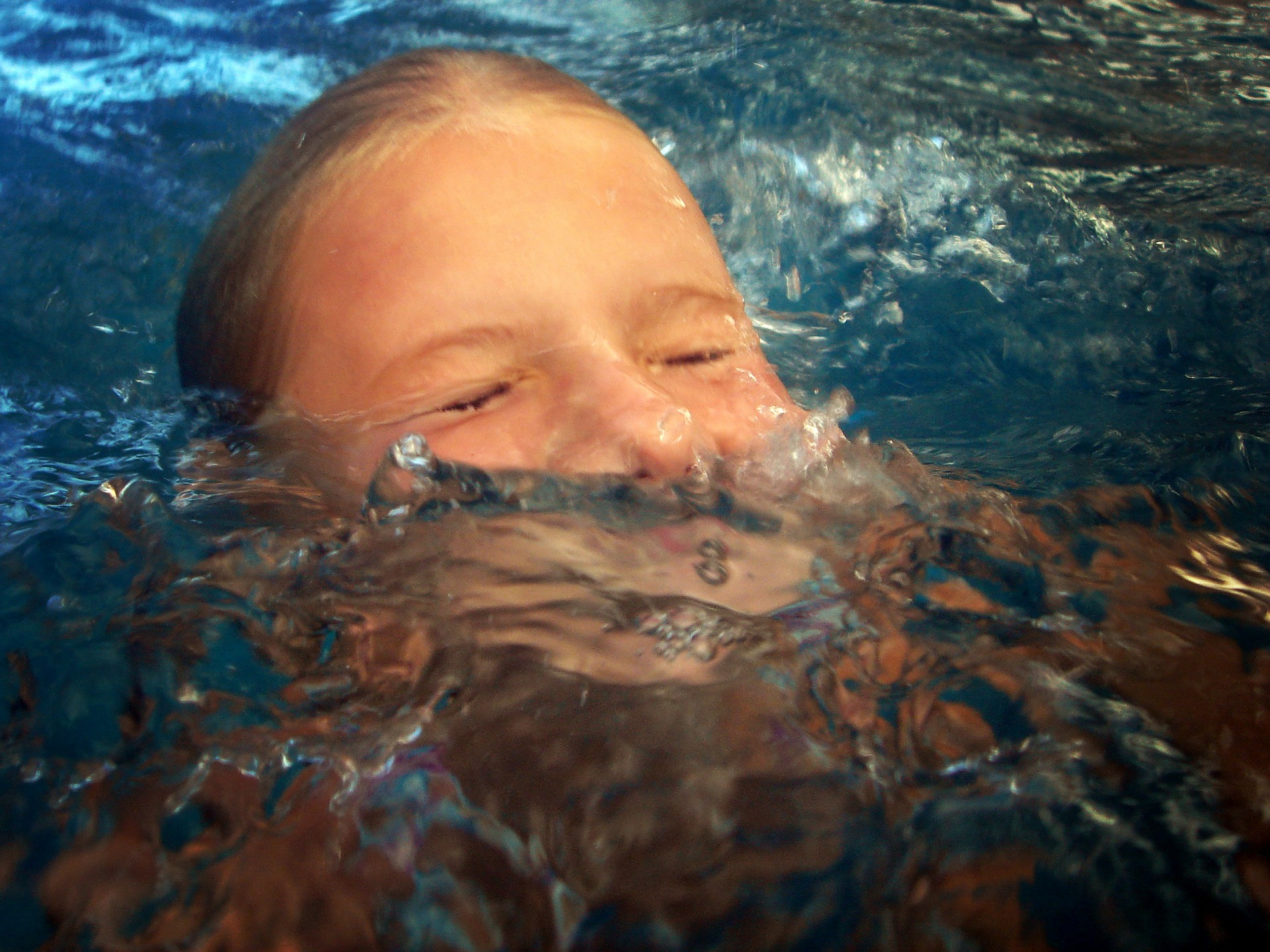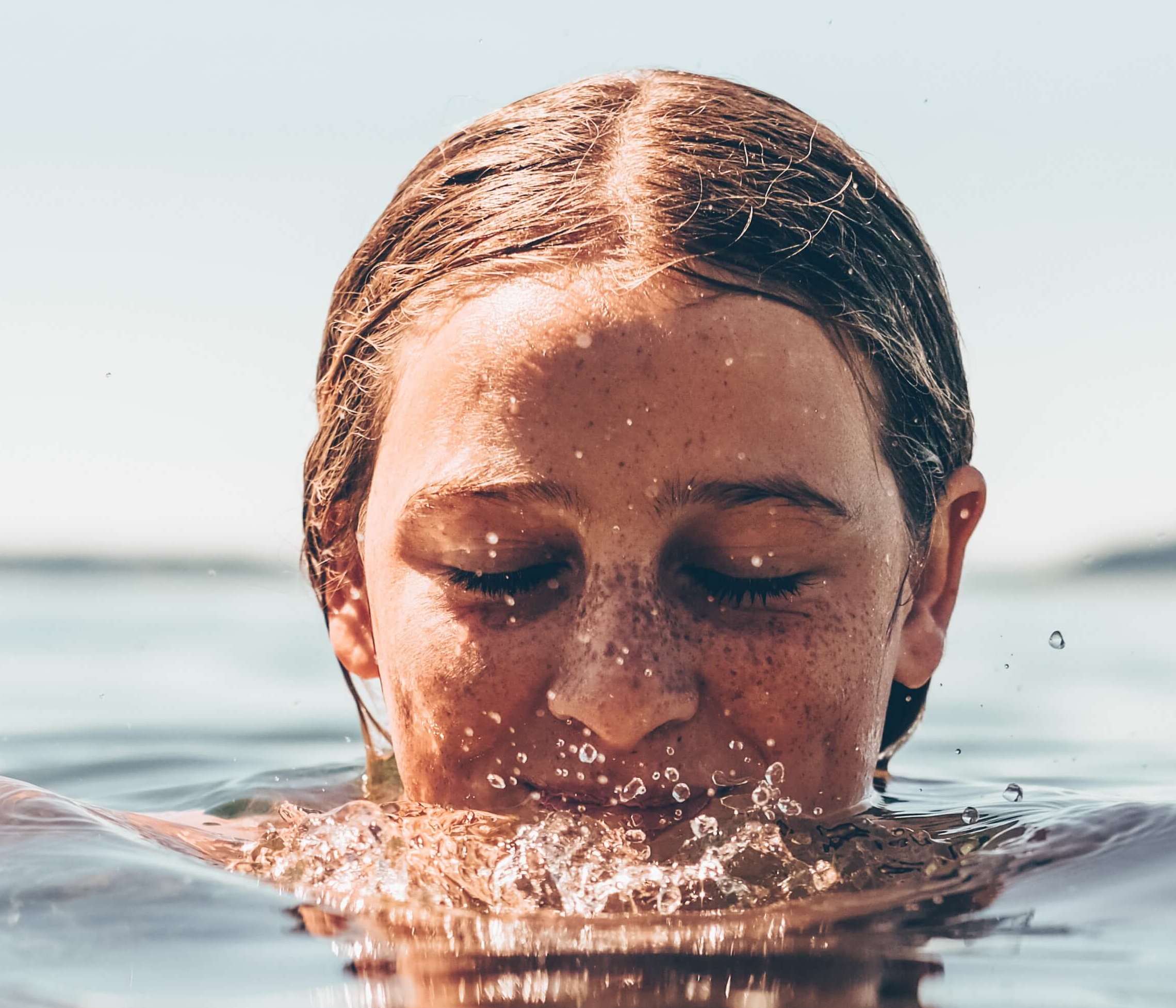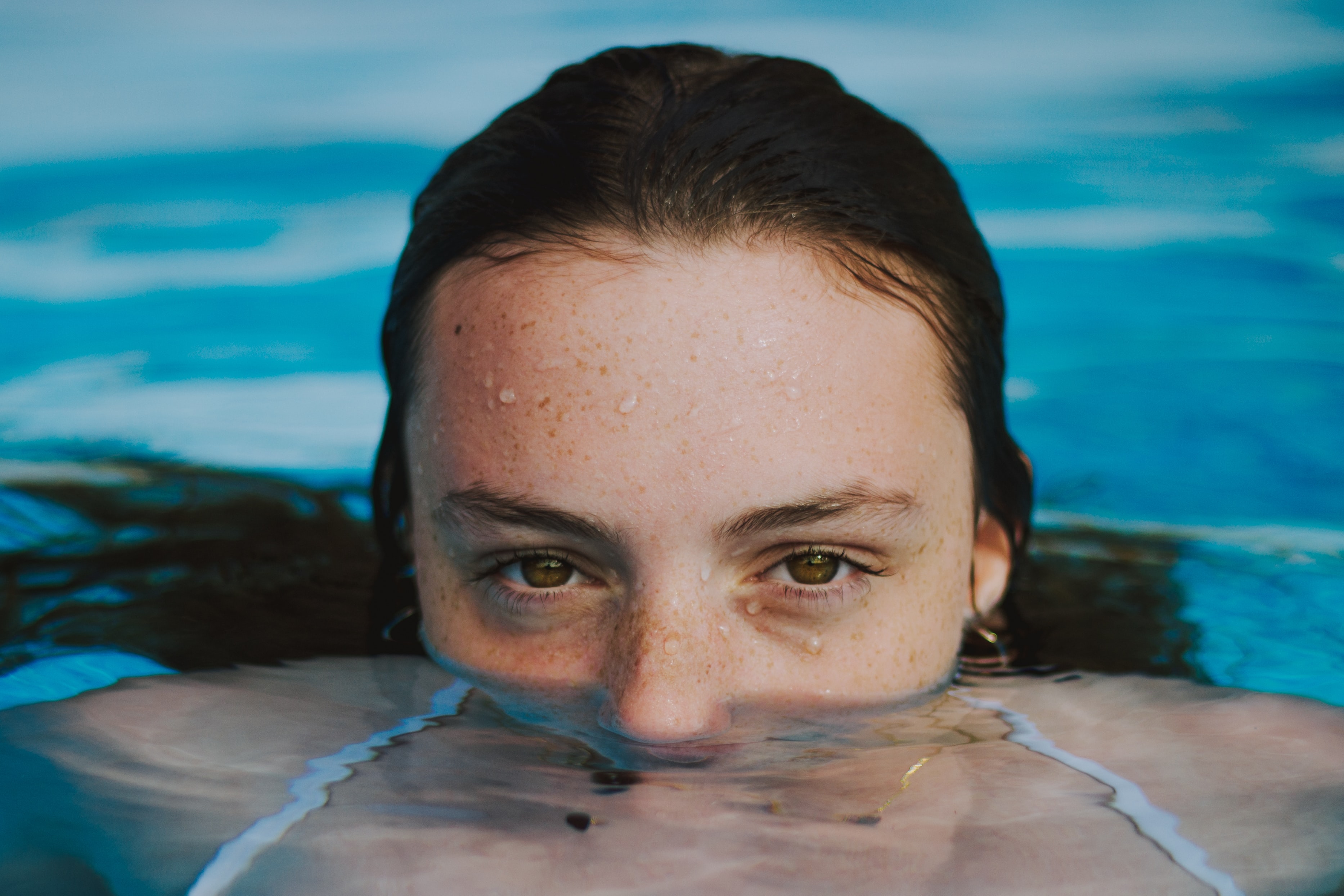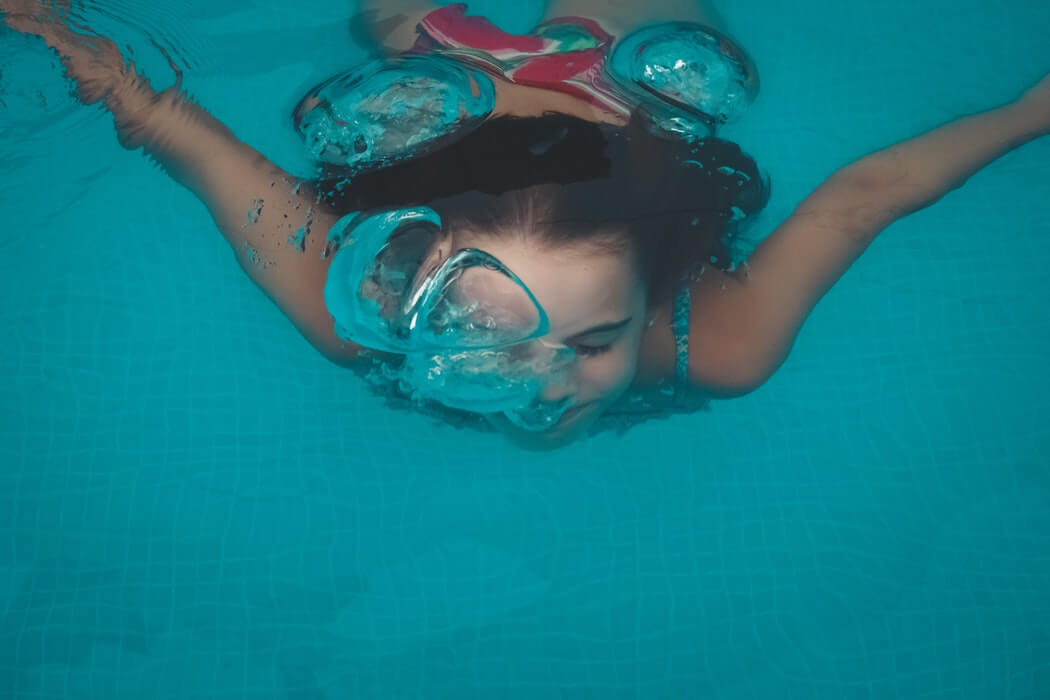Should I exhale or hold my breath?
Exhale slowly through your nose (a gentle "hum") while your face is in the water—don't hold your breath. Steady bubbles keep water out and help you stay calm.
Does the thought of going underwater completely freak you out? Your heart rate starts to rise as the doubts and fears creep into your head. You know deep down that you have to get over this if you're going to overcome your fear of swimming and increase your swimming confidence.
Once you’re comfortable submerging and exhaling steadily, make your next step deep end breathing and control so your calm surface skills carry over when the water gets deeper.
Work through the 3 steps detailed here and your confidence will sky-rocket.
As your confidence builds with submerging and breathing, you can also learn practical ways to overcome fear of deep water without rushing the process.

The more relaxed you are in the water, the less oxygen is used by your body and then the length of time spent underwater increases.
The ability to submerge the face is arguably one of the most important stages when learning to swim, particularly when overcoming a fear of water.
Some beginners arrive with this ability built-in and only need to be taught how to breathe whilst swimming. For others it will be one of the most terrifying tasks you face.
Learning how to go underwater goes hand-in-hand with learning to relax in the water. Get used to submerging and you will be more relaxed as you swim. Become more relaxed and you will be more comfortable with going underwater. It's a natural cycle of progression. For more about learning to relax in the water, click here.
There are 3 key steps to work through to become confident with going underwater. These are crucial for beginners or those with a fear of swimming. Others will find them easy. The 3 steps are:
It goes without saying that a gradual approach is needed here. One stage at a time and only when you are happy and confident do you proceed to the next stage. Work though the steps of breath control and learn how to stop sinking when you submerge.
Remember, getting the face wet and being splashed in the face are two completely different concepts, each having different effects, and not always positive ones. Here are a few practices to work through:


For the next stage of mastering going underwater, you need to learn how to hold your breath by "breathing in and holding it all in". Some will be able to do this easily, others will learn by trial and error as you partially submerge your face and realise you are not able to breathe underwater!

An object can then be placed just under the water surface, shallow enough to see and reach for it, but deep enough for the mouth to be submerged in order to reach it. Once confidence is gained with this exercise, then the object can be lowered slightly to encourage the mouth and nose to be submerged.
These practices are best performed with an assistant in the water holding the object for you. This may also help enhance your confidence with someone in the water with you.
Stage 2 naturally leads quickly onto stage 3 where the object is placed below the water surface where you are encouraged to retrieve it by completely submerging your head underwater. By this stage, breath holding should be more accomplished and you should begin to relax more as you submerge. Eventually swimming underwater becomes a natural progression.
Progression from this stage is to incorporate face submerging, either partially or completely, whilst swimming various strokes and even retrieving objects from the pool floor during lengths or widths.
If you want to build confidence further, try the safe submerge-then-stand drill. This involves submerging, then standing up in the water before continuing—great for learning control, breath awareness and trusting your ability when you surface.

Exhale slowly through your nose (a gentle "hum") while your face is in the water—don't hold your breath. Steady bubbles keep water out and help you stay calm.
Do short sets (3–5 seconds underwater), keep a steady nose "hum," and start with one hand on the wall for instant support. Move slowly and come up to breathe before you feel breathless.
Submerge slowly and equalise early: swallow or yawn to open the eustachian tubes. If you feel pain or can't clear the pressure, stop and try again later—don't force it.
Follow a simple 3-step progression: 1) get the face wet (splashes, blowing bubbles), 2) partial submersion, 3) full submersion—only moving on when each step feels easy.
Keep a light nose exhale the whole time (humming helps). Nose clips are fine as a temporary aid while you learn consistent bubbles.
They help a lot—seeing clearly reduces anxiety and makes submersion practice feel safer and more controlled.
Very short at first. Think "quality reps": dip, hum/bubbles for a few seconds, up to breathe, reset—then repeat calmly. Add seconds only when you feel totally relaxed.
Yes: blow bubbles on the surface, cup water onto your face, or push a floating object with your breath. These build comfort without long underwater holds.
Absolutely—use bath or shower time to get comfortable with water on your face and a gentle nose exhale; it's a low-stress way to build the habit.
Practice in the shallow end, never alone, and stop if you feel ear pain or dizziness. Equalise early and often, and rest as needed.
All of the above stages assist hugely with the process of increasing swimming confidence and overcoming a fear of swimming. Understanding how well you float, how to glide and how and when to breathe are crucial steps too. Find all of these in my massively popular book 'The Complete Beginners Guide to Swimming'.
Click below to download your copy, or click here for more details.
I am a member of the Amazon Associates Program and I will earn a commission from qualifying purchases at no extra cost to you.
Going Underwater Without Holding Your Nose. 'My question is about going underwater without holding your nose. This is something I've never been able to do. Water always goes up my nose and into my sinuses.'
I need to some help with learning to put my face in the water. 'Learning how to put your face in the water can sometimes be scary when learning how to swim. The best thing to do, if it is something that you find challenging, is to approach it in stages.'